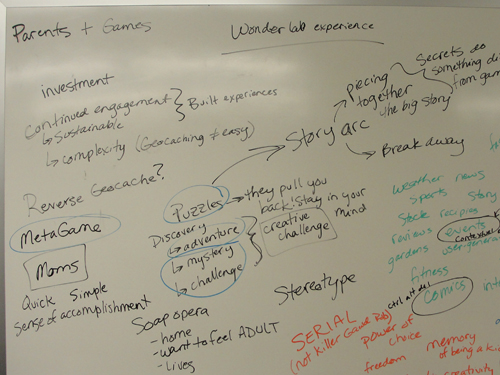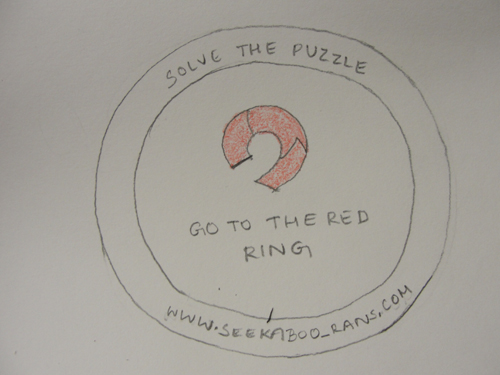Seekaboo, Design Project
An answer to the CHI 2010 student design competition, encourage people to walk or to take a walk while experiencing the world around them.
Methods Used
Concept Development
Ethnography
Ideation
Interviewing
Prototyping
Sketching
Surveys
Usability Testing

The Problem - CHI 2010
Our final project of the semester was related directly to the CHI 2010 design competition problem which was to encourage people to walk or to take a walk as well as to experience the world around them.
Process
Our team began by thinking about target user groups. We already had the problem space defined, what we needed to do was find a user group. Many of our meetings were held while we walked. In this way we could see other people walking and it also helped to identify our target group. We also decided that we did not want to create "yet another" iphone application and we also didn't want our design to come from the many health benefits that walking provides. We eventually stumbled upon and went with mothers and their children as a target user group. We also wanted our design to be fun for people to use. From here we thought of and sketched many different devices, systems, and other design concepts that were targetted towards mothers and their kids and after doing research and conducting ethnographic studies we thought of a game system that incorporated hide and seek, geocaching, and scavenger hunt features. We called it Seekaboo. We created a prototype of the game to conduct usability tests where participants played the actual game. During one of the usability tests non-participants actually started to play the game without being prompted.







Final Concept
Seekaboo is an interactive citywide walking game with devices secreted within environments. We wanted this game to be playable by both mothers and their kids. Devices, called "Secrets", are placed throughout a city or community area, indoors or outdoors, and participants could jump in and play the game at any point. There would be puzzles on each Secret that when solved, would lead the player to a new Secret. Participants would then be walking from Secret to Secret and the devices could be placed to allow people to experience the world around them in finer detail and notice the environment they are currently in. The prototype we built was made from store bought taplights, tape, construction paper, and markers. On top of this we also formalized strategies for continued development of the system.